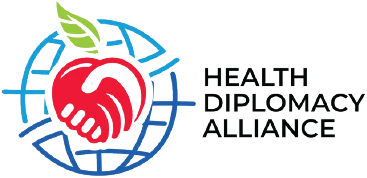WIM Spotlight: Women in Global Health Leadership

Read the full report here- GWL_Voices_Spotlight_Women_in_Global_Health_Leadership_report_e446655e0c
Africa’s Health Financing in a New Era

Africa’s health sector faces a major financing crisis, with a 70% drop in ODA from 2021 to 2025 threatening critical health programs and SDG 3. Africa CDC’s new strategy focuses on domestic resource mobilization, innovative and blended financing, with governance as a key enabler. A two-phase plan (2025–2030) and a Health Financing Scorecard will guide and track progress. Read more: Addressing-Health-Financing-Challenges-in-Africa-Through-Domestic-Resource-Mobilization-and-Innovative-Financing-Mechanisms_7-April-2025
Member States Adopt Landmark Resolution on Skin Diseases at 78th World Health Assembly

Geneva, May 2025 — In a historic move to elevate skin health on the global public health agenda, Member States at the 78th World Health Assembly (WHA78) adopted the resolution titled “Skin Diseases as a Global Public Health Priority.” Led by Côte d’Ivoire and co-sponsored by Colombia, China, Egypt, Micronesia, Nigeria, and Togo, the resolution marks a transformative step toward addressing the needs of over 2 billion people affected by skin conditions worldwide. Skin diseases and wounds are among the most common health conditions globally, yet they remain disproportionately neglected in national and international health strategies. The resolution acknowledges the wide-ranging impact of skin conditions, including infectious, autoimmune, genetic, and climate-sensitive diseases, and calls for a comprehensive, integrated response. The resolution mandates the development of a Global Action Plan that will focus on prevention, early detection, effective treatment, and long-term care, while promoting equitable access to affordable, high-quality services and integrating skin health into broader health systems. “This resolution marks a turning point,” said Jennifer Austin, CEO of the International Alliance of Dermatology Patient Organizations (GlobalSkin). “For the first time, the voices of people living with skin diseases have been truly heard by Ministers of Health all around the world. Now, we must work together to turn this commitment into meaningful and lasting action.” “This is a major milestone for global dermatology,” said Prof. Henry W. Lim, President of the International League of Dermatological Societies (ILDS). “It reflects decades of advocacy and scientific progress. The next step is to ensure that implementation is inclusive, well-resourced, and sustainable.” The resolution urges Member States to: Strengthen primary healthcare systems and workforce training. Expand access to affordable diagnostics and treatments. Integrate skin health into disability, rehabilitation, and mental health policies. Promote research, surveillance, and innovation, including digital tools and tele-dermatology. It also calls on the international community including NGOs, academic institutions, and the private sector to collaborate in supporting implementation, reducing stigma, and advancing access to care. “We were glad to have engaged with Member States throughout the process leading to this resolution,” said Katherine Urbáez, Founder and Executive Director of the Health Diplomacy Alliance. “We are committed to continuing our support for the development, consultation, and implementation of the Global Plan of Action on skin diseases, among all groups and collective efforts of leading organizations.” The success of this resolution will depend on the collaboration of all stakeholders – governments, civil society, healthcare providers, researchers, and patient organizations – to ensure that the forthcoming Global Plan of Action on skin diseases is inclusive, evidence-based, and responsive to the needs of those most affected. This resolution is not just a policy achievement; it is a global commitment to improving the lives of those affected by skin diseases, striving to achieve universal health coverage and ensuring that no one is left behind. Media Contact:Fahad Parvez Communications Manager GlobalSkin fahad.parvez@globalskin.org

